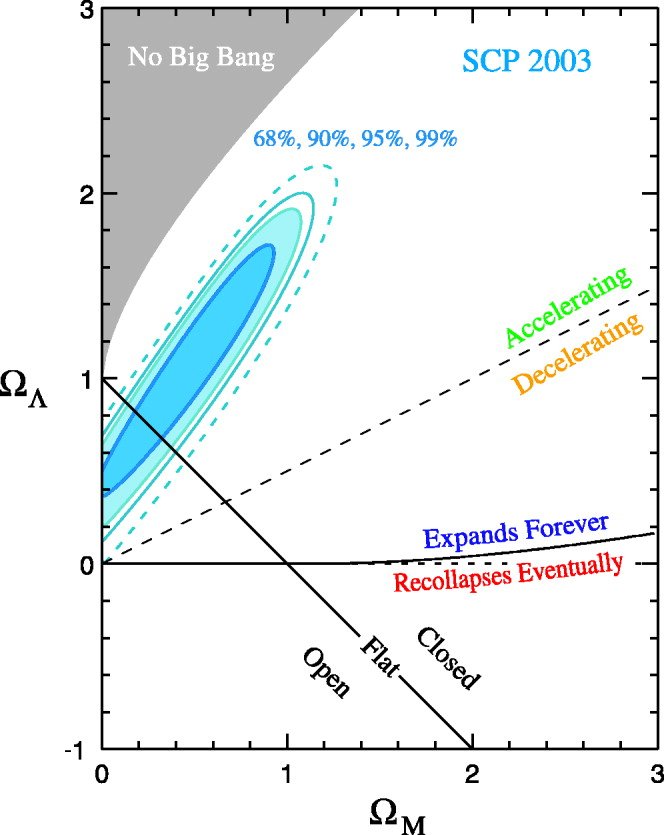- shape of space
- accelerating / decelerating universe
- final outcome (expands forever or recollapses)
So what values for lambda do we get from the supernovae? Acceleration means OmegaL is "beating" OmegaM.
Things to notice.
- An accelerating Universe is older. (ie the expansion rate was slower in the past, so the universe took longer to grow to its present size.
- Even universes which expand forever can be spatially flat or closed, and universes which collapse may yet be spatially open.
- As time goes by, Lambda wins. Flambda ~ R, Fgravity ~ R-2. If the cosmological constant exists, it was end up dominating the expansion.

